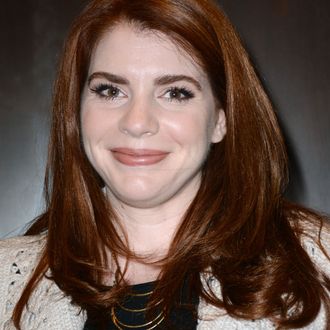
At the Twilight 10th-anniversary panel at New York Comic-Con, Stephenie Meyer spilled the beans on Life and Death, her brand-new gender-flipped rewrite of the YA classic. “The idea came from answering questions at book signings,” Meyer revealed. “People would always say Bella is a damsel in distress, when she’s actually just a human in a world full of superheroes. Can you lift a car over your head?” At first, her publisher just wanted her to write a “wistful forward” about how the book had changed her life, but, Meyer said, “The more I thought about it, I thought that would be so sappy. I wanted to make it more fun.”
Meyer has heard the criticisms that she’d just done a simple “find-and-replace” on her characters’ names, and she agrees that the project should not be considered a brand-new original book. “Everyone is saying this is not a new book, and I know,” she says. “This is totally bonus material.” Still, Meyer argues the ease of the transition proves that her tropes weren’t as gendered as her critics claim. “It was like a science experiment,” she said. “At the end, you have to go back and ask, Was your hypothesis correct? And it was! The essential action beats of the story are unchanged.”
Still, the gender-flipping experience was a little more complicated than simply hitting control-F. Take the scene early on in Twilight, where Edward saves Bella from a group of street harassers. “I don’t think many men have had the experience of being harassed by a group of women, and actually being in danger,” Meyer said. “So I had to ramp up the danger — they’re angry drug dealers now.” Of course, the biological differences between the sexes mean there are limits to this approach, which is why Meyer says she won’t be rewriting the later Twilight books: “I literally can’t do Breaking Dawn with Beau. Renesmee [Bella’s telepathic half-human, half-vampire baby] can’t exist.”


